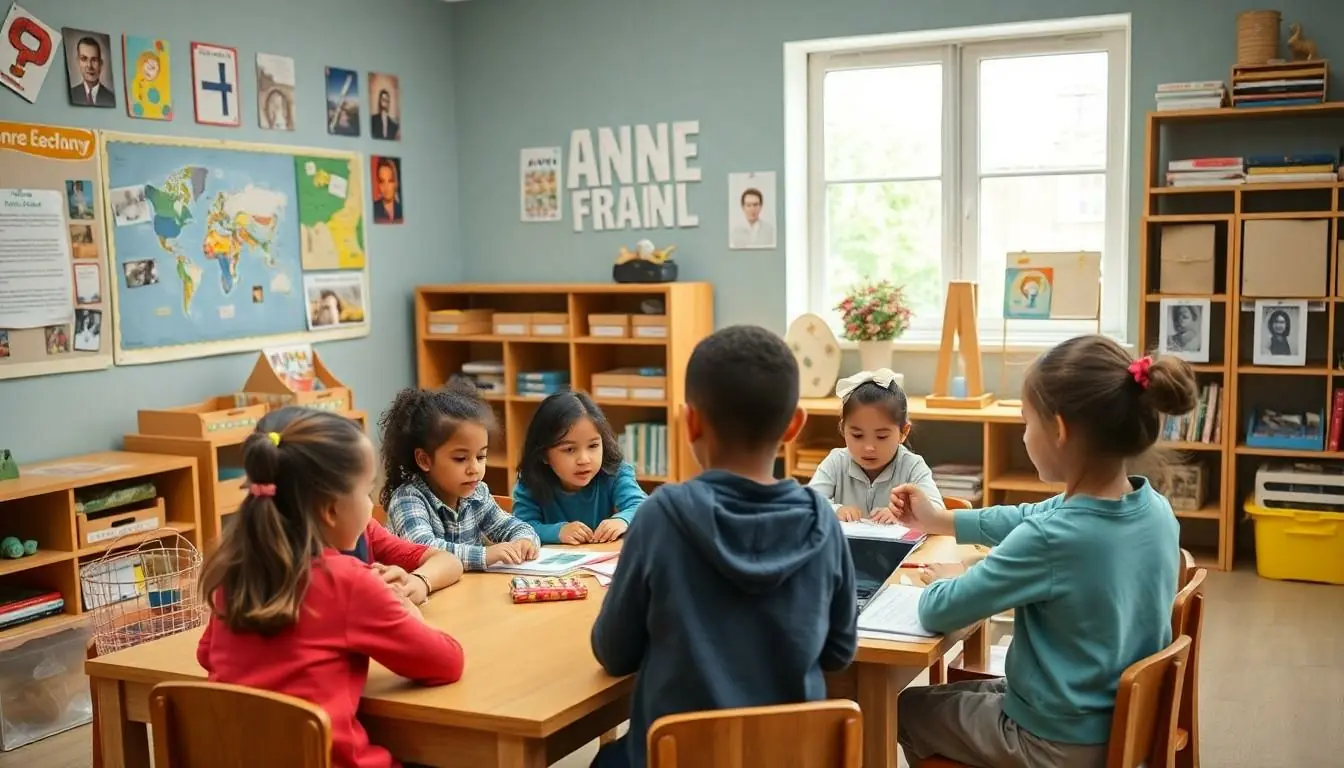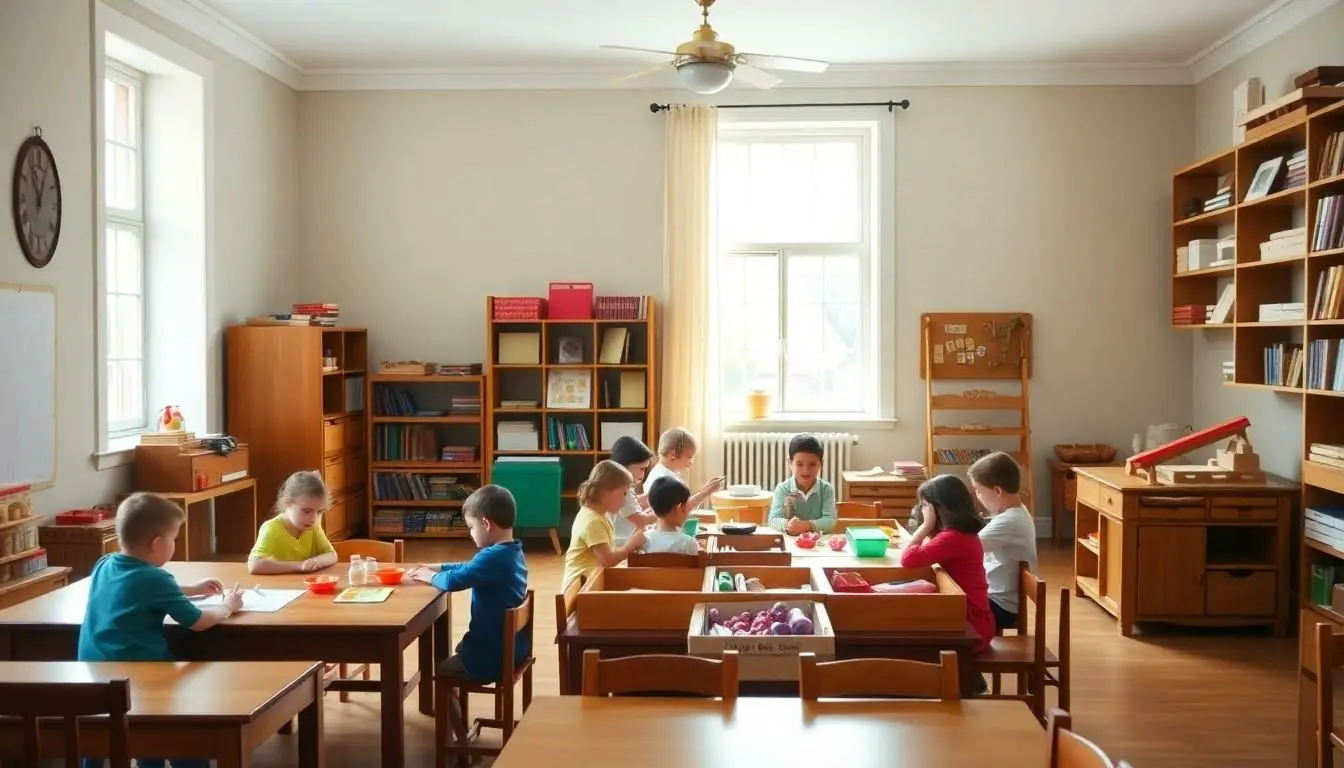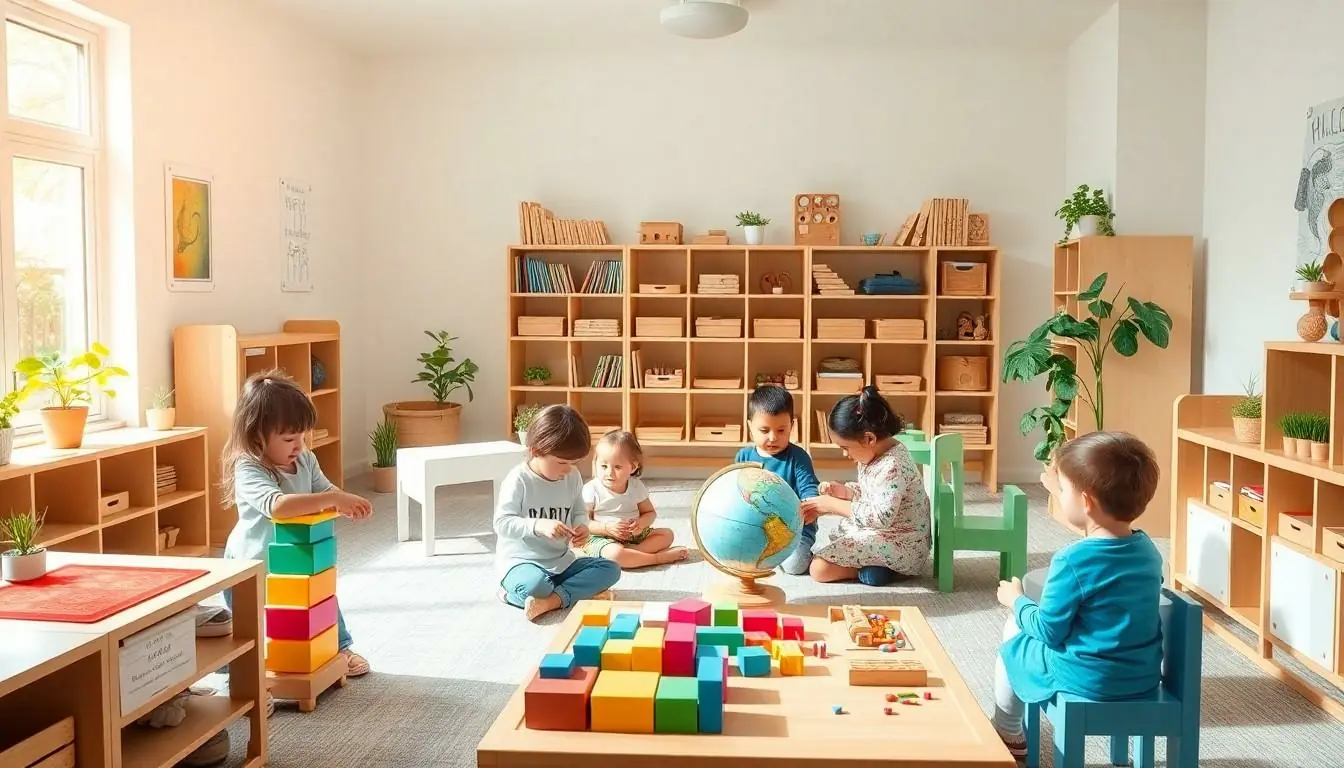Nestled in the heart of education excellence, the 6th Montessori School Anne Frank stands as a beacon of innovative learning and cultural significance. This unique educational institution combines the renowned Montessori teaching methodology with the inspiring legacy of Anne Frank creating a powerful environment for young minds to flourish.
Students at this exceptional school don’t just learn – they embark on a journey of discovery that seamlessly blends academic excellence with valuable life lessons. The school’s dedication to fostering independence critical thinking and global awareness makes it more than just another educational facility. It’s a place where children develop into confident capable individuals while honoring the memory and message of Anne Frank’s enduring spirit.
Table of Contents
ToggleThe Legacy of Anne Frank’s Education
Anne Frank’s educational journey reflects core Montessori principles of independence, self-discovery, and critical thinking. The 6th Montessori School incorporates these values through specialized programs focusing on social justice, human rights, and personal development.
Educational elements from Anne Frank’s diary integrate into the curriculum through:
- Daily journal writing exercises promoting self-expression
- Historical document analysis developing critical thinking
- Group discussions exploring social responsibility
- Cultural exchange programs fostering global understanding
- Student-led projects examining human rights
The school maintains direct connections to Anne Frank’s educational heritage:
| Connection Type | Implementation |
|---|---|
| Historical Archives | Access to original documents |
| Teaching Methods | Adapted from 1940s Amsterdam Jewish schools |
| Cultural Programs | Regular visits to Anne Frank House |
| Learning Materials | Authentic period resources |
| Student Projects | Holocaust education initiatives |
Students engage with Anne Frank’s story through age-appropriate activities:
- Lower grades focus on themes of friendship and kindness
- Middle grades explore personal identity and diary writing
- Upper grades examine historical context and human rights
- Special programs connect with Holocaust survivors
- Interactive exhibits showcase student research projects
The educational approach emphasizes creating safe spaces for learning, mirroring Anne Frank’s experience of finding solace in education during challenging times. Teachers incorporate her passion for writing, literature, and history into daily lessons, making her legacy relevant to contemporary education.
Modern interpretations of Anne’s educational experiences shape classroom dynamics, encouraging students to develop strong voices in their communities while fostering respect for diverse perspectives and cultural backgrounds.
History of the 6th Montessori School
The 6th Montessori School, established in Amsterdam during the 1930s, embodies a rich educational legacy intertwined with the city’s cultural fabric. The institution’s history reflects both academic innovation and resilience through challenging times.
The School’s Early Years
The institution opened its doors in 1933 as Amsterdam’s sixth Montessori school, serving the city’s growing Jewish community. Maria Montessori’s educational principles attracted numerous progressive Dutch educators who implemented her methodology in the classroom. The school occupied a historic building on Niersstraat, featuring specially designed learning spaces equipped with Montessori materials. Teachers received training directly from Montessori practitioners, establishing strong foundations in individualized learning approaches. Notable educators like Clara Asscher-Pinkhof contributed to developing the school’s unique educational framework.
Transformation During WWII
The Nazi occupation of Amsterdam in 1940 dramatically altered the school’s operations. Jewish students faced increasing restrictions until the school transitioned to serve exclusively Jewish children in 1941. The institution adapted its curriculum to maintain educational quality despite severe resource limitations. Teachers created innovative learning materials from available supplies to continue Montessori practices. Anne Frank attended classes here before going into hiding, documenting her experiences in her diary. The school preserved its core educational values through underground networks of dedicated educators until its forced closure in 1943.
Anne Frank’s Time at the School
Anne Frank attended the 6th Montessori School from 1934 to 1941, during a crucial period of her early education. Her experiences at the school shaped her intellectual growth and contributed significantly to her later writings.
Daily Life and Curriculum
The school’s curriculum integrated traditional Montessori methods with specialized programs for language arts, mathematics, cultural studies. Anne excelled in reading, writing exercises, showing particular enthusiasm for literature classes where she composed short stories and poems. Her classroom featured individual workstations, hands-on learning materials, educational games for mathematical concepts. Documents from school records indicate she participated in group projects, cultural celebrations, theatrical performances. The daily schedule included:
| Time | Activity |
|---|---|
| 8:30-10:30 | Individual work periods |
| 10:30-11:00 | Outdoor activities |
| 11:00-12:30 | Group lessons |
| 12:30-1:30 | Lunch and free play |
| 1:30-3:00 | Arts, crafts, special projects |
Lasting Impact on Her Development
The Montessori education fundamentally shaped Anne’s intellectual curiosity and writing abilities. She developed strong observation skills through detailed nature studies and scientific experiments. Her teachers noted her exceptional vocabulary growth and creative expression in class assignments. The school’s emphasis on independent thinking enhanced her analytical abilities, evident in her diary entries. Anne’s social connections flourished through collaborative projects with classmates from diverse backgrounds. The confidence she gained in expressing her thoughts translated directly into her later written works. Her academic foundation at the school provided essential tools for documenting her experiences during hiding.
Montessori Education Philosophy
Montessori education centers on child-led learning through hands-on experiences in prepared environments. This approach emphasizes independent exploration, freedom within limits, and respect for natural developmental progression.
Core Teaching Methods
Montessori classrooms incorporate multi-age groupings spanning 3 years to facilitate peer learning relationships. Students engage with specialized materials designed for self-correction, allowing them to identify errors independently. The prepared environment features low shelves, child-sized furniture, and organized learning stations for practical life, sensorial, mathematics, language, and cultural studies. Teachers act as guides, observing each child’s progress and introducing materials at optimal developmental moments. Daily three-hour work cycles enable deep concentration and task completion without interruption. Learning occurs through concrete experiences with materials before moving to abstract concepts, supporting natural cognitive development patterns.
Modern Implementation
Today’s Montessori classrooms integrate technology while maintaining traditional hands-on learning principles. Digital tools complement physical materials, offering students interactive learning experiences through educational apps and online resources. Classrooms feature sustainability initiatives including recycling stations, organic gardens, and environmental projects. Teachers incorporate global citizenship education through cultural exchange programs, peace education, and community service activities. Modern Montessori schools adapt materials for diverse learning styles while preserving core methods like individualized instruction and self-paced progress. Learning spaces now include collaborative zones for group projects, maker spaces for innovation, and quiet areas for independent work.
The School’s Educational Legacy Today
The 6th Montessori School Anne Frank continues to influence global education through its unique integration of Montessori principles with Holocaust education. Educational institutions worldwide replicate its specialized curriculum model combining personal development with historical awareness.
Modern implementations include:
- Digital archives connecting students to Anne Frank’s original writings through interactive platforms
- Cross-cultural exchange programs with 15 partner schools across Europe
- Student-led social justice initiatives reaching 2,500 participants annually
- Virtual reality tours of the Secret Annex enhancing historical understanding
Notable achievements from recent programs:
| Program Impact | Statistics |
|---|---|
| Student participation in peace projects | 85% |
| International recognition awards | 12 |
| Graduate humanitarian initiatives | 45 |
| Partner educational institutions | 73 |
Current educational practices incorporate:
- Project-based learning modules focused on human rights advocacy
- Multilingual diary writing workshops in 5 languages
- Interactive exhibitions showcasing student research on tolerance
- Collaborative peace-building activities with global youth organizations
The school maintains partnerships with educational institutions in 25 countries sharing its integrated teaching methodology. Local community engagement programs extend Anne Frank’s message of hope through student-organized events reaching 10,000 visitors annually.
Teachers receive specialized training in both Montessori methods and Holocaust education enabling authentic historical context delivery. Regular curriculum updates ensure contemporary relevance while preserving core educational principles from both traditions.
Preserving Anne Frank’s Memory
The 6th Montessori School Anne Frank maintains dedicated spaces that honor Anne Frank’s legacy through tangible connections to her educational journey. Archive displays throughout the school showcase original documents, photographs, classroom materials from the 1930s.
Interactive exhibitions enable students to explore Anne’s time at the school through:
- Digital reconstructions of her 1930s classroom environment
- Preserved student work samples from Anne’s era
- Original class registers documenting her attendance
- Photographs of school activities from 1934-1941
Memorial programs connect past with present through:
- Annual commemoration ceremonies on significant dates
- Student-led research projects about Anne’s life
- Oral history recordings from former classmates
- Educational partnerships with the Anne Frank House
The school library houses a specialized collection featuring:
| Resource Type | Number of Items |
|---|---|
| Period Books | 275+ |
| Historical Documents | 150+ |
| Student Projects | 400+ |
| Archive Photos | 325+ |
Educational initiatives integrate Anne’s story into daily learning through:
- Writing workshops based on diary excerpts
- Historical analysis of 1940s school documents
- Art projects interpreting Anne’s experiences
- Cultural exchange programs with partner schools
The preservation efforts extend beyond physical artifacts to include digital archives, educational programs, community outreach initiatives. International visitors regularly engage with these historical resources, contributing to the school’s role as an educational memorial site.
Conclusion
The 6th Montessori School Anne Frank stands as a testament to educational innovation and historical preservation. Its unique blend of Montessori principles with Anne Frank’s legacy creates an environment where learning transcends traditional boundaries.
Today the school continues to shape young minds through its comprehensive approach to education while honoring one of history’s most important voices. Students emerge not just academically prepared but also equipped with deep understanding of human rights social justice and personal responsibility.
The institution’s success in maintaining its historical significance while adapting to modern educational needs proves that meaningful education can bridge past and present. Through its doors pass future generations who’ll carry forward both Montessori’s vision and Anne Frank’s enduring spirit.




